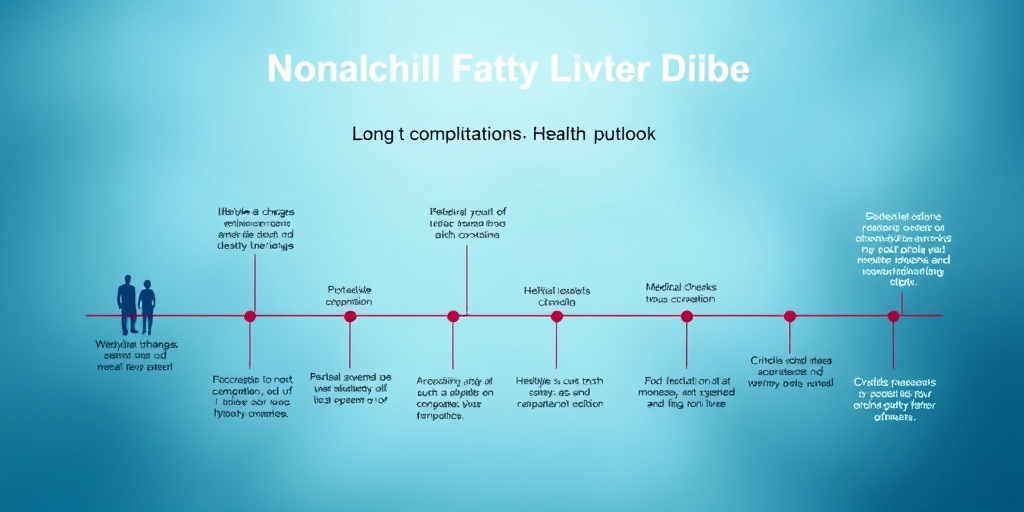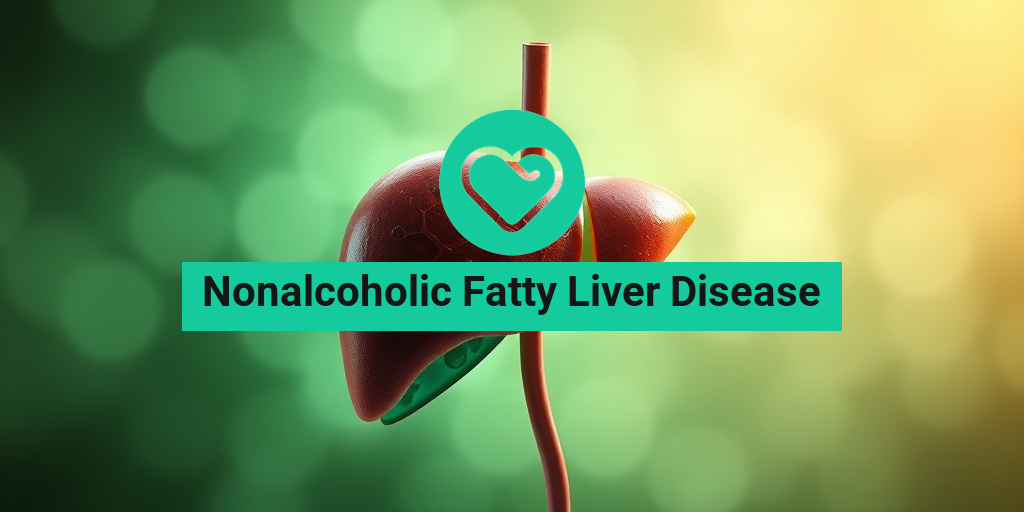What Is Nonalcoholic Fatty Liver Disease?
Nonalcoholic Fatty Liver Disease (NAFLD) is a condition characterized by the accumulation of fat in the liver of individuals who consume little to no alcohol. This condition has gained significant attention in recent years due to its increasing prevalence and potential to lead to more severe liver diseases, including cirrhosis and liver cancer. NAFLD is often associated with obesity, type 2 diabetes, and metabolic syndrome, making it a growing concern in today’s health landscape.
Understanding the Causes of NAFLD
The exact cause of nonalcoholic fatty liver disease is not fully understood, but several factors contribute to its development:
- Obesity: Excess body weight is one of the primary risk factors for NAFLD. Fat accumulation in the liver is often linked to overall body fat.
- Insulin Resistance: Many individuals with NAFLD have insulin resistance, which can lead to increased fat storage in the liver.
- High Cholesterol and Triglycerides: Elevated levels of fats in the blood can contribute to liver fat accumulation.
- Genetics: Family history may play a role in the likelihood of developing NAFLD.
- Diet: A diet high in sugars, refined carbohydrates, and unhealthy fats can increase the risk of NAFLD.
Stages of Nonalcoholic Fatty Liver Disease
NAFLD can progress through several stages:
- Simple Fatty Liver: The initial stage where fat accumulates in the liver without causing inflammation or damage.
- Nonalcoholic Steatohepatitis (NASH): A more severe form where fat accumulation is accompanied by inflammation and liver cell damage.
- Cirrhosis: The advanced stage where the liver becomes severely scarred, leading to liver failure and other complications.
Understanding these stages is crucial for early detection and intervention, which can significantly improve outcomes for individuals with NAFLD.
Symptoms of Nonalcoholic Fatty Liver Disease
One of the challenges with nonalcoholic fatty liver disease is that it often presents with few or no symptoms, especially in the early stages. Many people may be unaware they have the condition until it progresses to a more severe stage. However, some common symptoms can indicate the presence of NAFLD:
Common Symptoms to Watch For
- Fatigue: A general feeling of tiredness or lack of energy is a common complaint among those with NAFLD.
- Discomfort in the Upper Right Abdomen: Some individuals may experience a dull ache or discomfort in the area of the liver.
- Weight Loss: Unexplained weight loss can occur, particularly in more advanced stages of the disease.
- Weakness: A feeling of weakness or malaise can be a sign of liver dysfunction.
- Jaundice: In severe cases, yellowing of the skin and eyes may occur, indicating liver damage.
When to Seek Medical Advice
If you experience any of these symptoms, especially if you have risk factors such as obesity or diabetes, it is essential to consult a healthcare professional. Early diagnosis and management can help prevent the progression of nonalcoholic fatty liver disease and its associated complications.
For those seeking more information about NAFLD, including treatment options and lifestyle changes, resources like Yesil Health AI (yesilhealth.com) can provide evidence-based health answers tailored to your needs.
In conclusion, understanding nonalcoholic fatty liver disease is vital for maintaining liver health. By recognizing the symptoms and risk factors, individuals can take proactive steps toward prevention and management. Remember, your liver health is crucial for overall well-being! 🌟

Causes and Risk Factors
Nonalcoholic Fatty Liver Disease (NAFLD) is a condition characterized by the accumulation of fat in the liver of individuals who consume little to no alcohol. Understanding the causes and risk factors associated with NAFLD is crucial for prevention and management. Let’s delve into the primary contributors to this increasingly common liver condition.
1. Obesity
One of the most significant risk factors for NAFLD is obesity. Excess body weight, particularly around the abdomen, can lead to fat buildup in the liver. Studies show that individuals with a body mass index (BMI) of 30 or higher are at a much greater risk of developing this disease. Maintaining a healthy weight through diet and exercise is essential for liver health. 🏋️♂️
2. Insulin Resistance
Insulin resistance is another major contributor to NAFLD. This condition occurs when the body’s cells do not respond effectively to insulin, leading to elevated blood sugar levels. Insulin resistance is often associated with type 2 diabetes and metabolic syndrome, both of which significantly increase the risk of developing nonalcoholic fatty liver disease.
3. Poor Diet
A diet high in saturated fats, refined carbohydrates, and sugars can contribute to the development of NAFLD. Foods such as sugary beverages, fast food, and processed snacks can lead to weight gain and fat accumulation in the liver. A balanced diet rich in fruits, vegetables, whole grains, and healthy fats is vital for preventing this condition. 🥗
4. Sedentary Lifestyle
A lack of physical activity can exacerbate the risk of NAFLD. Regular exercise helps maintain a healthy weight and improves insulin sensitivity. Engaging in at least 150 minutes of moderate-intensity aerobic activity each week can significantly reduce the risk of developing fatty liver disease.
5. Genetics
Genetic predisposition also plays a role in the development of NAFLD. If you have a family history of liver disease or metabolic disorders, your risk may be higher. Genetic factors can influence how your body processes fats and sugars, making some individuals more susceptible to liver fat accumulation.
6. Other Medical Conditions
Several medical conditions can increase the risk of NAFLD, including:
- Type 2 Diabetes: This condition is closely linked to insulin resistance and can lead to fat buildup in the liver.
- High Cholesterol: Elevated levels of cholesterol and triglycerides can contribute to liver fat accumulation.
- Hypertension: High blood pressure is often associated with metabolic syndrome, increasing the risk of NAFLD.
Diagnosis of Nonalcoholic Fatty Liver Disease
Diagnosing Nonalcoholic Fatty Liver Disease can be challenging, as many individuals may not exhibit symptoms in the early stages. However, early detection is crucial for effective management and prevention of complications. Here’s how healthcare professionals typically diagnose NAFLD.
1. Medical History and Physical Examination
The diagnostic process often begins with a thorough medical history and physical examination. Your healthcare provider will ask about your symptoms, lifestyle, and any underlying health conditions. They may also perform a physical exam to check for signs of liver disease, such as an enlarged liver or jaundice.
2. Blood Tests
Blood tests are essential for diagnosing NAFLD. These tests can help assess liver function and check for elevated liver enzymes, which may indicate liver inflammation or damage. Common tests include:
- Alanine Aminotransferase (ALT): Elevated levels may suggest liver injury.
- Aspartate Aminotransferase (AST): This enzyme can also indicate liver damage.
- Bilirubin: High levels may indicate liver dysfunction.
3. Imaging Studies
If blood tests suggest liver issues, imaging studies may be conducted to visualize the liver. Common imaging techniques include:
- Ultrasound: This non-invasive test can detect fat accumulation in the liver.
- CT Scan or MRI: These imaging methods provide detailed images of the liver and can help assess the extent of fat accumulation.
4. Liver Biopsy
In some cases, a liver biopsy may be necessary to confirm the diagnosis and assess the severity of liver damage. During this procedure, a small sample of liver tissue is removed and examined under a microscope. This can help determine if there is inflammation or scarring (fibrosis) present.
Understanding the causes and risk factors of Nonalcoholic Fatty Liver Disease, along with the diagnostic process, is essential for early intervention and effective management. If you suspect you may be at risk, consult with a healthcare professional for personalized advice and testing. 🩺

Stages of Nonalcoholic Fatty Liver Disease
Nonalcoholic Fatty Liver Disease (NAFLD) is a condition characterized by the accumulation of fat in the liver of individuals who consume little to no alcohol. Understanding the stages of this disease is crucial for early detection and effective management. NAFLD can progress through several stages, each with its own implications for health.
1. Simple Fatty Liver (Steatosis)
The first stage of NAFLD is known as simple fatty liver or steatosis. In this stage, fat builds up in the liver cells but does not cause inflammation or damage. Most individuals with simple fatty liver experience no symptoms, and the condition is often discovered incidentally during imaging tests for other reasons. While this stage is generally considered benign, it can progress if lifestyle changes are not made.
2. Nonalcoholic Steatohepatitis (NASH)
The next stage is Nonalcoholic Steatohepatitis (NASH), where the accumulation of fat is accompanied by inflammation and liver cell damage. This stage can lead to more serious complications, including fibrosis (scarring of the liver). Symptoms may start to appear, such as fatigue, discomfort in the upper right abdomen, and elevated liver enzymes in blood tests. Early intervention is critical at this stage to prevent further progression.
3. Fibrosis
If NASH progresses, it can lead to fibrosis, where scar tissue begins to form in the liver. While the liver can still function relatively well at this stage, the presence of fibrosis indicates that significant damage has occurred. Individuals may not experience noticeable symptoms, but regular monitoring is essential to assess liver function and prevent further deterioration.
4. Cirrhosis
The final stage of NAFLD is cirrhosis, a severe condition characterized by extensive scarring of the liver. At this point, the liver’s ability to function is significantly impaired, leading to serious health complications such as liver failure, portal hypertension, and an increased risk of liver cancer. Symptoms may include jaundice (yellowing of the skin and eyes), swelling in the abdomen, and confusion. Cirrhosis is irreversible, making early detection and management of earlier stages vital.
Prevalence and Risk Factors
NAFLD is becoming increasingly prevalent worldwide, particularly in populations with high rates of obesity and diabetes. Factors that contribute to the development of NAFLD include:
- Obesity: Excess body weight is a significant risk factor.
- Type 2 Diabetes: Insulin resistance plays a crucial role in fat accumulation.
- High Cholesterol: Elevated levels of triglycerides can contribute to liver fat.
- Metabolic Syndrome: A cluster of conditions that increase the risk of heart disease and diabetes.
Treatment Options Available
Managing Nonalcoholic Fatty Liver Disease effectively requires a multifaceted approach tailored to the individual’s stage of the disease and overall health. Here are some of the most common treatment options available:
1. Lifestyle Modifications
One of the most effective ways to manage NAFLD is through lifestyle changes. These include:
- Weight Loss: Losing even a small percentage of body weight can significantly reduce liver fat and inflammation.
- Healthy Diet: A balanced diet rich in fruits, vegetables, whole grains, and healthy fats can support liver health. The Mediterranean diet is often recommended.
- Regular Exercise: Engaging in physical activity helps improve insulin sensitivity and reduce liver fat.
2. Medications
While there is no specific medication approved for NAFLD, certain drugs may be prescribed to manage associated conditions:
- Anti-Diabetic Medications: Medications like metformin can help improve insulin sensitivity.
- Cholesterol-Lowering Drugs: Statins may be used to manage cholesterol levels.
3. Monitoring and Regular Check-Ups
For individuals diagnosed with NAFLD, regular monitoring is essential. This may include:
- Blood Tests: To check liver function and monitor for any changes.
- Imaging Studies: Ultrasounds or MRIs can help assess liver fat and fibrosis.
4. Advanced Treatments
In cases where NAFLD progresses to cirrhosis, more advanced treatments may be necessary, including:
- Liver Transplant: In severe cases of liver failure, a transplant may be the only option.
Understanding the stages of Nonalcoholic Fatty Liver Disease and the available treatment options is crucial for effective management. Early detection and proactive lifestyle changes can significantly improve outcomes and enhance quality of life. 🌱

Lifestyle Changes for Management
Managing Nonalcoholic Fatty Liver Disease (NAFLD) requires a multifaceted approach, primarily focusing on lifestyle changes. These adjustments can significantly improve liver health and overall well-being. Here are some essential lifestyle changes to consider:
1. Adopt a Healthy Diet
Your diet plays a crucial role in managing NAFLD. A balanced diet can help reduce liver fat and improve liver function. Here are some dietary tips:
- Increase Fruits and Vegetables: Aim for a variety of colorful fruits and vegetables, which are rich in antioxidants and fiber.
- Choose Whole Grains: Opt for whole grains like brown rice, quinoa, and whole wheat bread instead of refined grains.
- Limit Sugary Foods: Reduce your intake of sugary snacks and beverages, as they can contribute to fat accumulation in the liver.
- Healthy Fats: Incorporate sources of healthy fats, such as avocados, nuts, and olive oil, while avoiding trans fats and saturated fats.
2. Maintain a Healthy Weight
Weight management is vital for individuals with NAFLD. Losing even a small percentage of body weight can lead to significant improvements in liver health. Here are some strategies:
- Set Realistic Goals: Aim for a gradual weight loss of 1-2 pounds per week.
- Regular Exercise: Engage in at least 150 minutes of moderate-intensity aerobic exercise each week, such as brisk walking or cycling.
- Strength Training: Incorporate strength training exercises at least twice a week to build muscle mass and boost metabolism.
3. Limit Alcohol Consumption
While NAFLD is not caused by alcohol, excessive alcohol intake can exacerbate liver damage. It’s essential to limit or avoid alcohol altogether. If you choose to drink, do so in moderation:
- Moderate Drinking Guidelines: For women, this means up to one drink per day, and for men, up to two drinks per day.
- Consult Your Doctor: Always discuss alcohol consumption with your healthcare provider, especially if you have NAFLD.
4. Manage Other Health Conditions
Many individuals with NAFLD also have other health conditions, such as diabetes or high blood pressure. Managing these conditions is crucial:
- Regular Check-Ups: Schedule regular visits with your healthcare provider to monitor your health.
- Medication Adherence: Take prescribed medications as directed to manage conditions like diabetes and hypertension.
Long-Term Outlook and Complications
The long-term outlook for individuals with Nonalcoholic Fatty Liver Disease can vary significantly based on lifestyle choices and the stage of the disease. Understanding potential complications and the importance of early intervention is vital for managing this condition.
1. Stages of Nonalcoholic Fatty Liver Disease
NAFLD progresses through several stages, each with different implications for health:
- Simple Fatty Liver (Steatosis): The initial stage where fat accumulates in the liver without inflammation or damage.
- Nonalcoholic Steatohepatitis (NASH): A more severe form where inflammation occurs, potentially leading to liver damage.
- Cirrhosis: The advanced stage characterized by severe scarring of the liver, which can lead to liver failure and other serious complications.
2. Potential Complications
If left unmanaged, NAFLD can lead to several complications, including:
- Liver Damage: Chronic inflammation can result in liver fibrosis and cirrhosis.
- Increased Risk of Cardiovascular Disease: Individuals with NAFLD are at a higher risk for heart disease and stroke.
- Type 2 Diabetes: There is a strong link between NAFLD and insulin resistance, increasing the risk of developing diabetes.
3. Importance of Early Intervention
Early detection and intervention are crucial for improving the long-term outlook for individuals with NAFLD. Regular screenings and monitoring can help identify the disease in its early stages, allowing for timely lifestyle modifications and medical treatment. Engaging with healthcare professionals and adhering to recommended lifestyle changes can significantly enhance liver health and reduce the risk of complications.
In conclusion, managing Nonalcoholic Fatty Liver Disease through lifestyle changes and understanding the long-term outlook is essential for maintaining overall health. By making informed choices and staying proactive, individuals can lead healthier lives and mitigate the risks associated with this condition. 🌱

Frequently Asked Questions about Nonalcoholic Fatty Liver Disease
What is Nonalcoholic Fatty Liver Disease (NAFLD)?
Nonalcoholic Fatty Liver Disease is a condition characterized by the accumulation of fat in the liver of individuals who consume little to no alcohol. It can lead to inflammation and damage to the liver, potentially progressing to more severe liver diseases.
What are the common causes of Nonalcoholic Fatty Liver Disease?
The primary causes of Nonalcoholic Fatty Liver Disease include:
- Obesity
- Type 2 diabetes
- High cholesterol and triglycerides
- Metabolic syndrome
- Poor diet and sedentary lifestyle
What are the stages of Nonalcoholic Fatty Liver Disease?
Nonalcoholic Fatty Liver Disease progresses through several stages:
- Simple fatty liver: Fat accumulation without inflammation.
- Nonalcoholic steatohepatitis (NASH): Fat accumulation with inflammation and liver cell damage.
- Fibrosis: Scarring of the liver.
- Cirrhosis: Severe scarring leading to liver failure.
How is Nonalcoholic Fatty Liver Disease diagnosed?
Diagnosis typically involves a combination of medical history, physical examination, blood tests, imaging studies (like ultrasound), and sometimes a liver biopsy to assess the extent of liver damage.
What treatments are available for Nonalcoholic Fatty Liver Disease?
Currently, there is no specific medication approved for Nonalcoholic Fatty Liver Disease. Treatment focuses on lifestyle changes, including:
- Weight loss
- Healthy diet
- Regular exercise
- Managing underlying conditions like diabetes and high cholesterol
Can diet help manage Nonalcoholic Fatty Liver Disease?
Yes! A balanced diet rich in fruits, vegetables, whole grains, and healthy fats can significantly help manage Nonalcoholic Fatty Liver Disease. Reducing sugar and saturated fat intake is also beneficial.
What is the prevalence of Nonalcoholic Fatty Liver Disease?
Nonalcoholic Fatty Liver Disease is becoming increasingly common, affecting an estimated 25% of the global population, with higher rates in individuals with obesity and diabetes.
Is there a new name for Nonalcoholic Fatty Liver Disease?
Yes, Nonalcoholic Fatty Liver Disease is sometimes referred to as metabolic dysfunction-associated steatotic liver disease (MASLD), reflecting its association with metabolic disorders.
How does weight loss impact Nonalcoholic Fatty Liver Disease?
Weight loss can significantly improve liver health in individuals with Nonalcoholic Fatty Liver Disease. Even a modest weight loss of 5-10% can reduce liver fat and inflammation.
Are there any medications for Nonalcoholic Fatty Liver Disease?
While there are no specific medications approved for Nonalcoholic Fatty Liver Disease, some anti-diabetic medications may help improve liver health in affected individuals. Always consult a healthcare provider for personalized advice.
What lifestyle changes can help manage Nonalcoholic Fatty Liver Disease?
Key lifestyle changes include:
- Adopting a healthy diet
- Engaging in regular physical activity
- Avoiding alcohol
- Regular health check-ups
If you have further questions or concerns about Nonalcoholic Fatty Liver Disease, it’s essential to consult with a healthcare professional for tailored advice and management strategies. 😊




